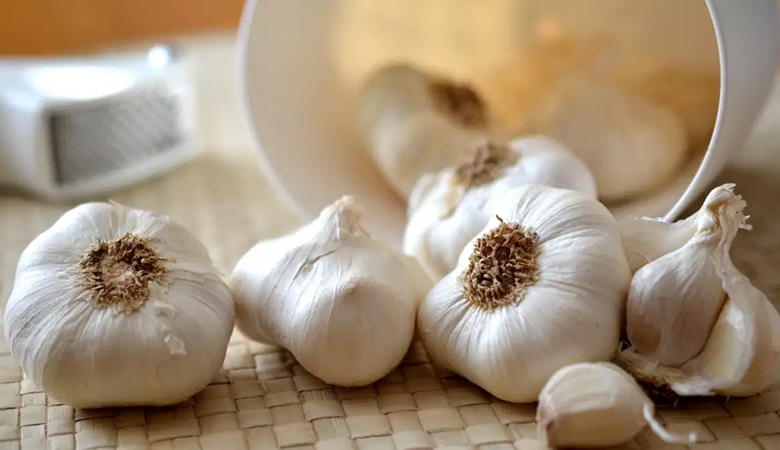How to Identify Fake Garlic and Protect Your Health

News Mania Desk/Agnibeena Ghosh/21st August 2024
The market for counterfeit products continues to expand, with a recent discovery in Maharashtra’s Akola district revealing a new concern: fake garlic. Following previous issues with imitation ORS, paneer, and butter, a case involving garlic fraud has emerged, highlighting the importance of vigilance when purchasing this commonly used ingredient.
A troubling report from Zee 24 Taas details an incident involving Subhash Patil’s wife, who unknowingly bought garlic made from cement. After purchasing 250 grams from a local vendor, she found that what she initially thought was garlic was actually cement covered with a white coating. This discovery was captured in a video, revealing the deceptive practices of a street vendor who is compromising public health and misleading consumers.
Garlic prices have recently surged, now ranging between Rs 300 and Rs 350 per kilogram, which has made it a target for fraudsters. As the market for fake garlic grows, it is crucial to know how to distinguish genuine garlic from its counterfeit counterparts.
Dr. Haricharan G, a senior consultant physician and Head of Internal Medicine at Gleneagles Hospitals in Hyderabad, provides valuable insights on how to identify real garlic. One of the primary indicators of authentic garlic is its distinct, pungent aroma. Real garlic emits a strong, characteristic smell, while fake garlic may lack this scent or have an artificial odor. Additionally, genuine garlic cloves are irregularly shaped with a thin, papery skin that is easy to peel. In contrast, fake garlic tends to have uniform, overly smooth cloves and a thicker, harder-to-remove skin.
Another practical test involves placing garlic in water. Real garlic, being dense and firm, will sink, whereas fake garlic, often made from synthetic materials, may float due to its less dense composition.
From a health perspective, consuming fake garlic poses serious risks. The counterfeit product may contain harmful synthetic materials or chemicals, which can lead to digestive issues, allergic reactions, or long-term health problems. Unlike real garlic, which is known for its immune-boosting and cardiovascular benefits, fake garlic lacks these advantages and may expose consumers to potential toxins. Prolonged exposure to the chemicals in counterfeit garlic could increase the risk of chronic health conditions, including cancer.
It is essential for consumers to stay informed and cautious when purchasing garlic and other food items. By recognizing the signs of fake products and understanding the potential health risks, individuals can better protect themselves and their families from fraudulent and harmful goods. As the market for counterfeit products evolves, remaining vigilant and informed is key to ensuring the safety and quality of what we consume.






